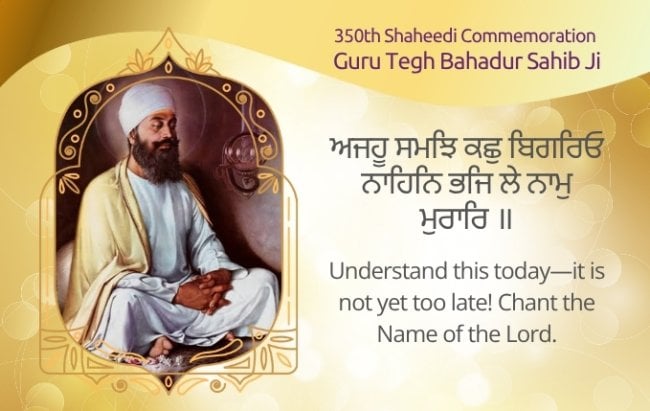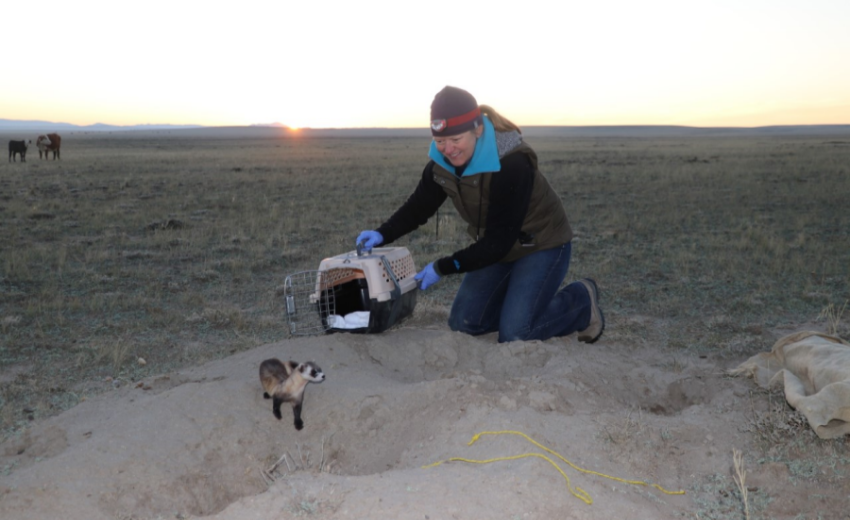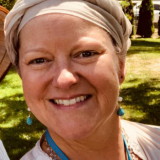Mother Earth Warrior: Sangeet Devraj Kaur (Wyoming)
Can you describe your job with Defenders of Wildlife?
I’ve always been an advocate for saving creatures – when you pull out one thread of the ecosystem, the rug starts to unravel quickly. When we’re losing biodiversity in nature, things can fall apart fast – clean air and clean water come next.
There has been such an assault and attack on our natural environment and resources in recent decades – climate change is at the forefront now.
I have spent 12 years working in wildlife conservation. I began working for a nonprofit called Defenders of Wildlife about four years ago. It is an organization that works across the nation to save endangered species. We focus on the species most at risk of going extinct in America through work on populations and habitat restoration. I live in Wyoming, but work in the Rocky Mountains and the Great Plains regions – north of South Dakota, New Mexico, Montana, and Wyoming.
We work with one of the most endangered species in North America, the black footed ferret – there are only 350 left. They rely on prairie dogs, and many agriculturalists feel they are pests since they eat grass for cattle, so they poison them. But the black footed ferrets are important, they are “keystone animals”- they serve a big role in the interconnected system of animals.
We also work with wild free-range bison. A long time ago there were 30 million in this country. They were slaughtered as one of many efforts to chip away at Native Americans’ identity and sovereignty. The numbers are currently back up to about 20,000 – we are building up herds across the Great Plains again. Working with Native American Tribes to bring back their buffalo population is very rewarding.
Can you describe Yogis for Mother Earth – the volunteer group you founded?
Yogis can take their practice from the mat to the outdoors, uniting in service projects to protect Mother Earth. Wildlife have souls, and they need our help.
I was introduced to Kundalini Yoga eight years ago. I found profound shift in my own well-being after practicing Kundalini Yoga. I took Teacher Training two years ago, and am now teaching regularly. I also took the Journey into the Heart of Sikh Dharma course. I believe that inner awareness – peace, compassion, and kindness – comes with these teachings. If more people can find peace within themselves with Kundalini Yoga, that can translate into serving our environment and living with nature.
I created Yogis for Mother Earth as an opportunity for people in the Rocky Mountains and Great Plains regions to volunteer with projects to help save wildlife in the region. I spread the word about volunteer opportunities through our email Listserv and Facebook page. We are geographically focused on the Rockies and the Plains – Colorado, Wyoming and Montana. It’s been really rewarding, and there has been lots of interest and participation from the community.
In my community I have found a beautiful parallel with working on ourselves with Kundalini Yoga and finding our own connection with nature – we are all part of this one connection. If we can take care of ourselves and our environment we can be good stewards and leave resources for future generations.
Yogis generally have the intent to be kind, compassionate, and do Seva – I want to give the yoga community an opportunity to help save wildlife. Lots of people don’t know where to start. I wanted to create a venue to do environmental service projects together – so these volunteers come out in the field with me to do various projects.
For example, we do surveys of ferrets at night (we count them, trap them and give them health checks before releasing them). We move prairie dogs to safer areas. We take down old ranching fencing that big game animals can get caught in – we need lots of volunteers for this. We walk for miles and roll up fencing as we go and take it down.
Yogis for Mother Earth also engages in climate change advocacy by participating in marches, and writing letters to government officials. These are all opportunities to do something off our mats.
Yogis are already usually doing a lot – by recycling, being conscientious about food sources, and in other ways. But there’s always more we can do.
What do you consider the most important planetary actions we as global citizens should be taking to help the planet?
We need a global response to climate change – we need more Gretas out there, championing in front of policymakers to advocate with governments to reduce emissions. These emissions have impacts on our whole ecosystem – species, fresh water and air. Public input and comments go a long way with state and federal legislatures and with Congress. We vote them in, and they are obligated to listen to us. Call them and write letters. Be an advocate for change.
The U.S. dropping out of the Kyoto Protocol after spearheading it was really unfortunate. People can write action letters to their elected representatives and sign petitions. Social media can be a really helpful tool to get people aware of the situation and send out calls to action.
The best way to engage on climate change is unique to each nation – you have to do some research, and if you want to be this advocate for change you have to put yourself out there. Global advocacy for climate change can sway political decision making.
How are you taking these actions?
I’ve been fortunate and challenged that it is my daily work to help save the planet. Because of that role, I see opportunities to engage the public with service projects on the ground. When volunteers come out and help me take down old barbed wire fence that is killing deer and other animals, it is rewarding to them. And we need the help!
Thanks to the efforts of the volunteers I work with, approximately five miles of the migration corridor is open again for animals to traverse. The volunteers love it. They work hard, help us get the job done and know their contributions make a big difference.
An intrinsic connection is forged. I really try to connect people with what is going on on the ground in nature. It can have a profound experience on individuals, and they are more likely to want to keep volunteering after seeing the positive impact their work has on the ground in nature.
There is always so much more that can be done. Environmental organizations almost always need help and welcome volunteers, no matter where they are based in the world.
What are the challenges that people might encounter when doing these actions to help the planet, and how can they be overcome?
Everyone doing their part will get us there. It needs to go beyond recycling – we need to go further collectively. When we elevate our consciousness and frequency, that translates into the exterior world. It will come back to you tenfold.
A lot of people are overwhelmed at the scale of the climate change problem. They have a fear of the present and the future. How do you get past the fear, and take the appropriate steps to make a difference? A lot of people think “I’m just one person, how can I make a difference?”
One person leads to another leads to another leads to another! Look at your skill set – how can you plug in? Letter writing? Spearheading a petition? Climate change is really at the policy level.
You can also do things on the ground to help wildlife. Many areas need help surveying wildlife and saving habitats from resource extraction. Many habitats are being fragmented for human development. The more you start to slice and dice the land . . . this is also contributing to climate change.
Get involved in environmental projects, like collecting rainwater. Provide containers to collect rainwater. Knowledge is power – continue to read up. Don’t be too scared or overwhelmed – follow that Facebook page, find that environmental group you want to support, give them money, sign up for projects where you can make a difference. Read that New York Times piece.
Do teachings from Sikh Dharma inspire your commitment to serving Mother Earth?
“Air is the Guru, water is the Father, and Earth is the Great Mother of all” – Slok of Japji Sahib
“You Yourself create, and You Yourself destroy . . . You Yourself created the Universe, and You are pleased. You Yourself are the bumble-bee, the flower, the fruit and the tree. You Yourself are the water, the desert, the ocean and the pool. You Yourself are the great fish, the tortoise and the Cause of causes. Your form can not be known.” – Siri Guru Granth Sahib, p. 1021
Guru Nanak saw Hindus and Muslims in opposition, and had that enlightenment opportunity – he brought a profound shift for yogis of the world. He brought to light the idea of being connected, that we’re all one. We’re all a part of this universe. Humans have this destructive nature. We need to lean on the Guru inside, that takes us from darkness to light. We need to see Mother Earth as just that – our mother. We need to nurture and care for her. It is my vision that we begin living on this planet in the way the Gurus intended – doing Seva and caring for others, and animals too who have souls.
Do you have any last words to share?
It is about community, and fostering environmental awareness and action in community. The group energy gives a tremendous boost. I want future generations to have as beautiful and biologically diverse an earth as possible.
Sangeet Devraj Kaur
Sangeet Devraj Kaur is the Senior Representative for the Rockies and Plains Program at Defenders of Wildlife. She is responsible for advancing the conservation programs for the American bison and endangered black-footed ferret in the Rocky Mountains and Great Plains. Her work involves collaborating with conservation partners and state and federal agencies, as well as conducting education and outreach. She facilitates partnerships with tribes across the West for bison recovery efforts.
She is also the founder of the grassroots volunteer effort Yogis for Mother Earth.
Email: [email protected]
Visit this site for volunteer opportunities: https://defenders.org/action


